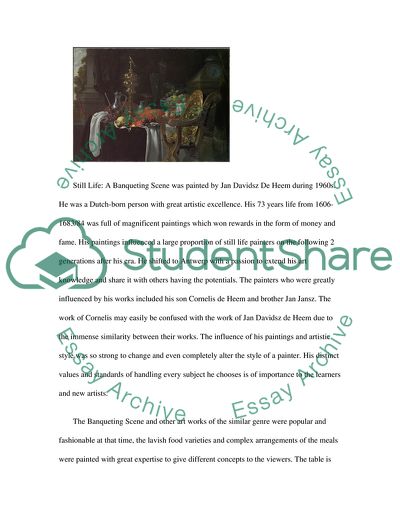Cite this document
(Still Life: A Banqueting Scene Research Paper Example | Topics and Well Written Essays - 1250 words, n.d.)
Still Life: A Banqueting Scene Research Paper Example | Topics and Well Written Essays - 1250 words. https://studentshare.org/performing-arts/1747320-still-life-a-banqueting-scene
Still Life: A Banqueting Scene Research Paper Example | Topics and Well Written Essays - 1250 words. https://studentshare.org/performing-arts/1747320-still-life-a-banqueting-scene
(Still Life: A Banqueting Scene Research Paper Example | Topics and Well Written Essays - 1250 Words)
Still Life: A Banqueting Scene Research Paper Example | Topics and Well Written Essays - 1250 Words. https://studentshare.org/performing-arts/1747320-still-life-a-banqueting-scene.
Still Life: A Banqueting Scene Research Paper Example | Topics and Well Written Essays - 1250 Words. https://studentshare.org/performing-arts/1747320-still-life-a-banqueting-scene.
“Still Life: A Banqueting Scene Research Paper Example | Topics and Well Written Essays - 1250 Words”. https://studentshare.org/performing-arts/1747320-still-life-a-banqueting-scene.


